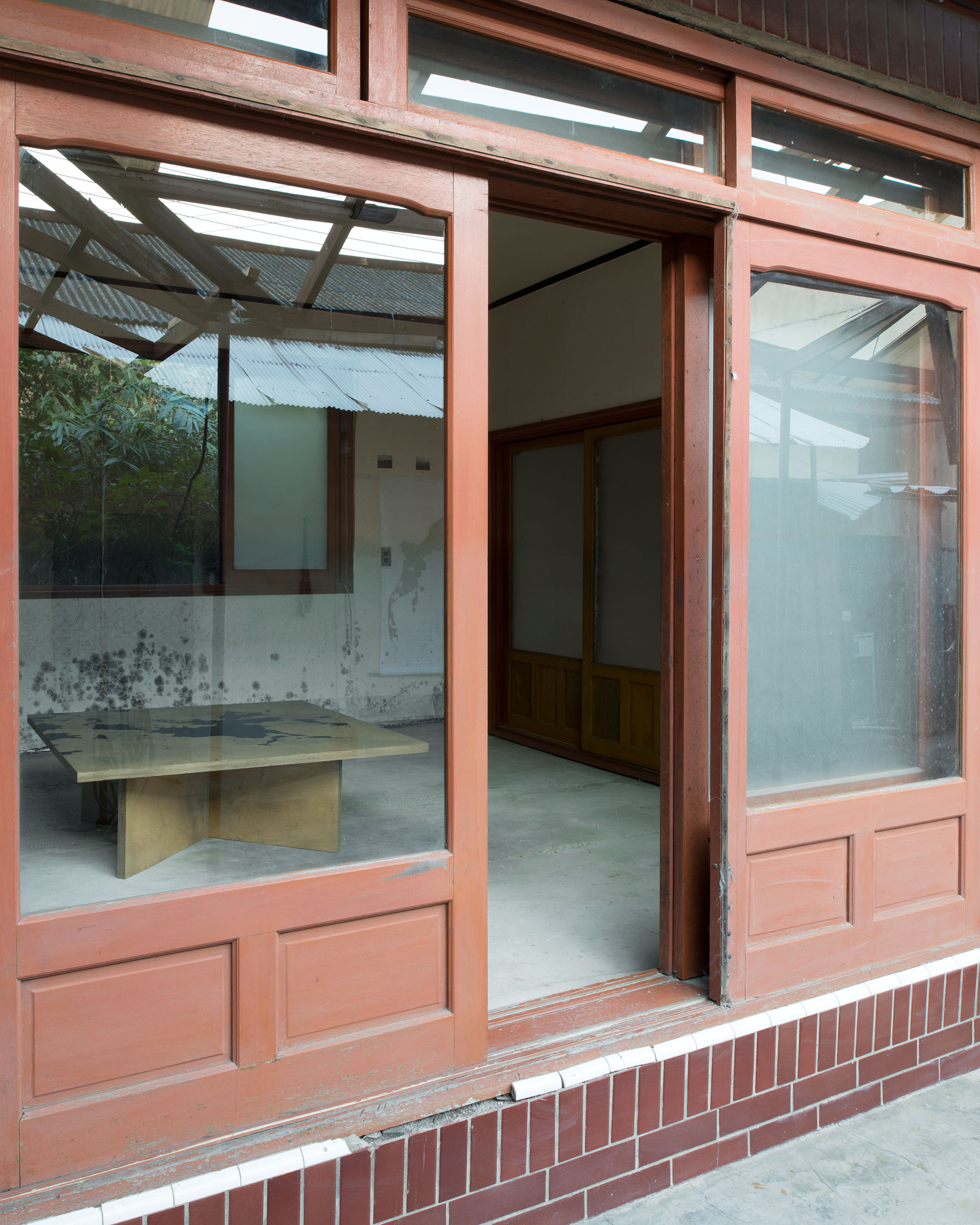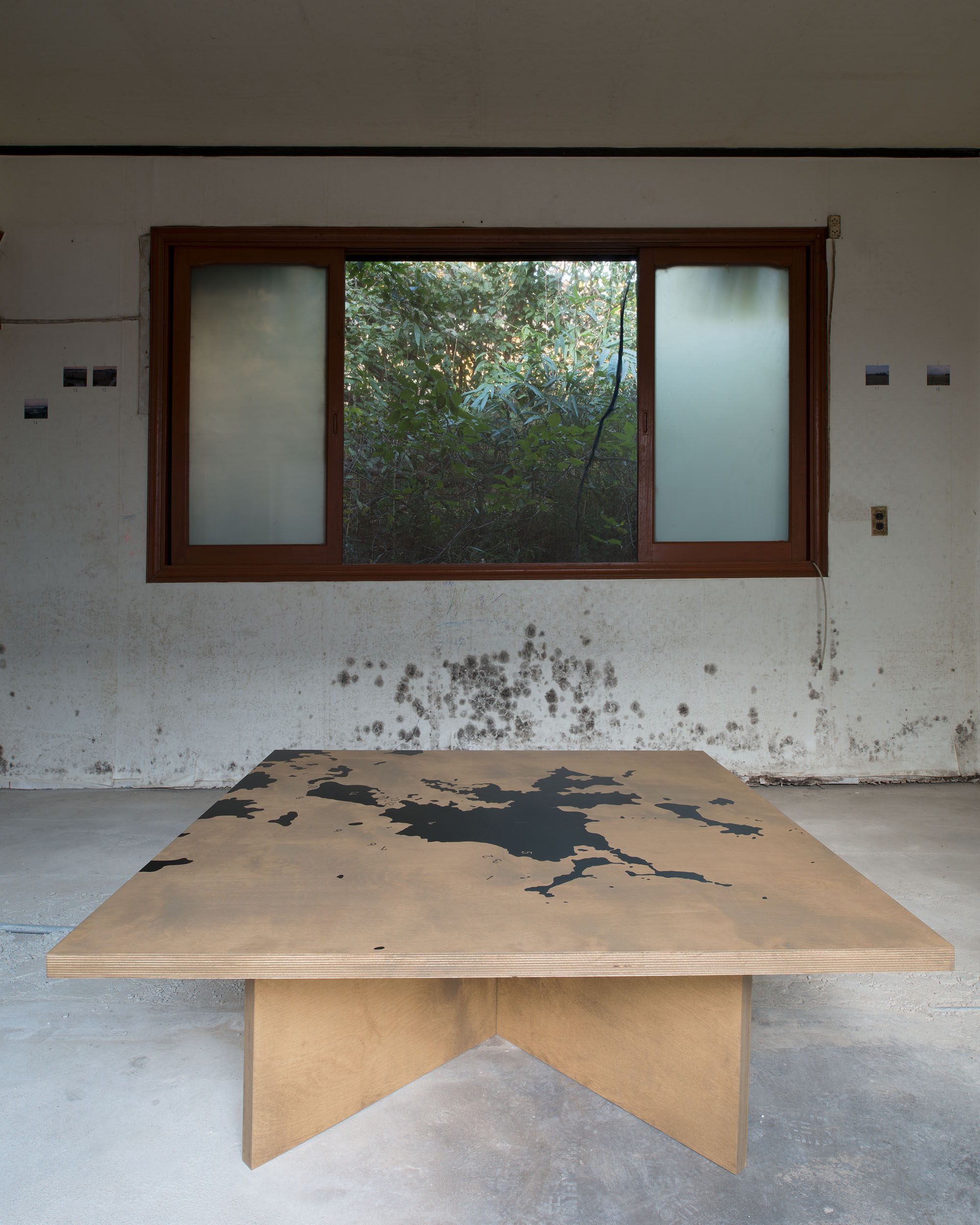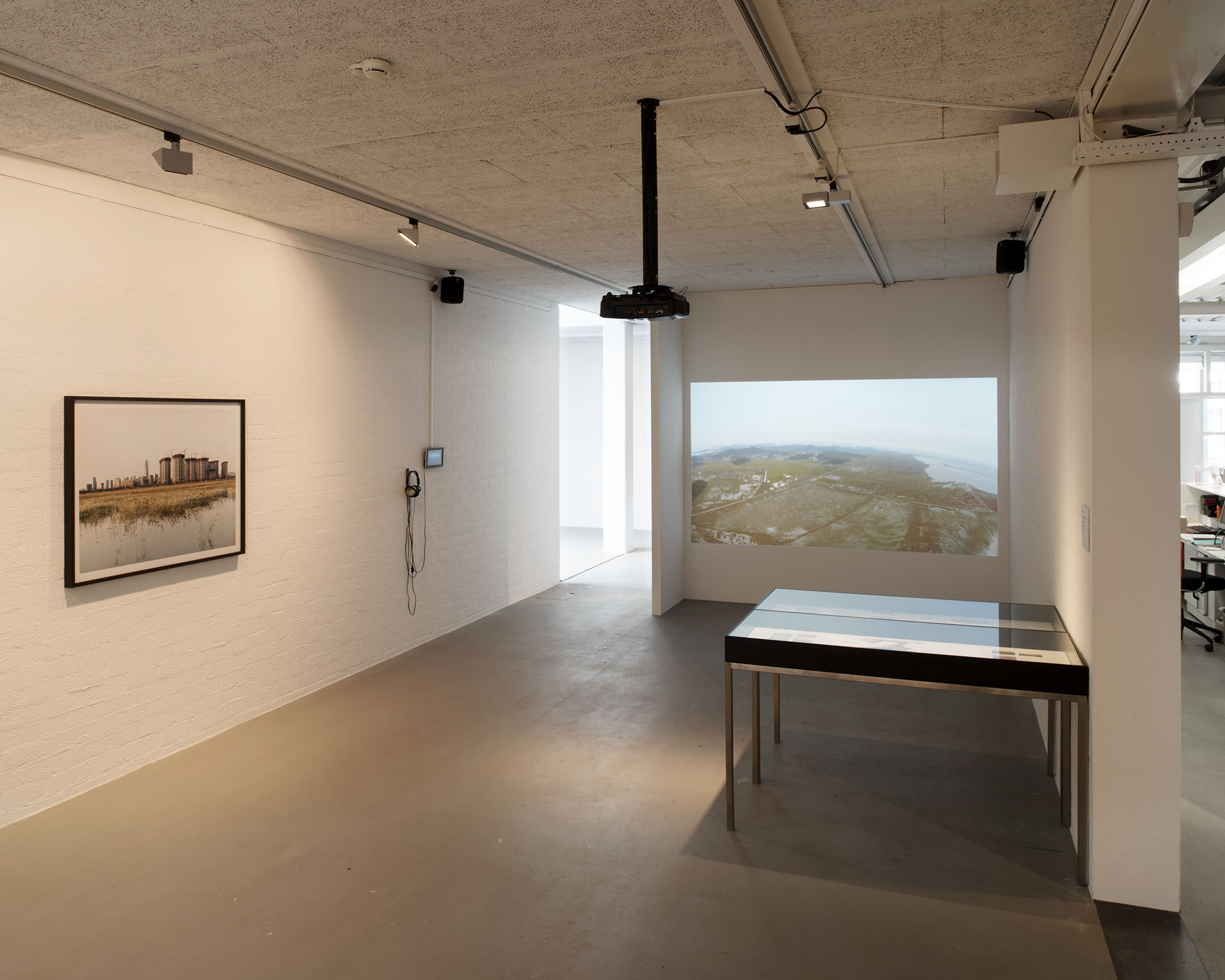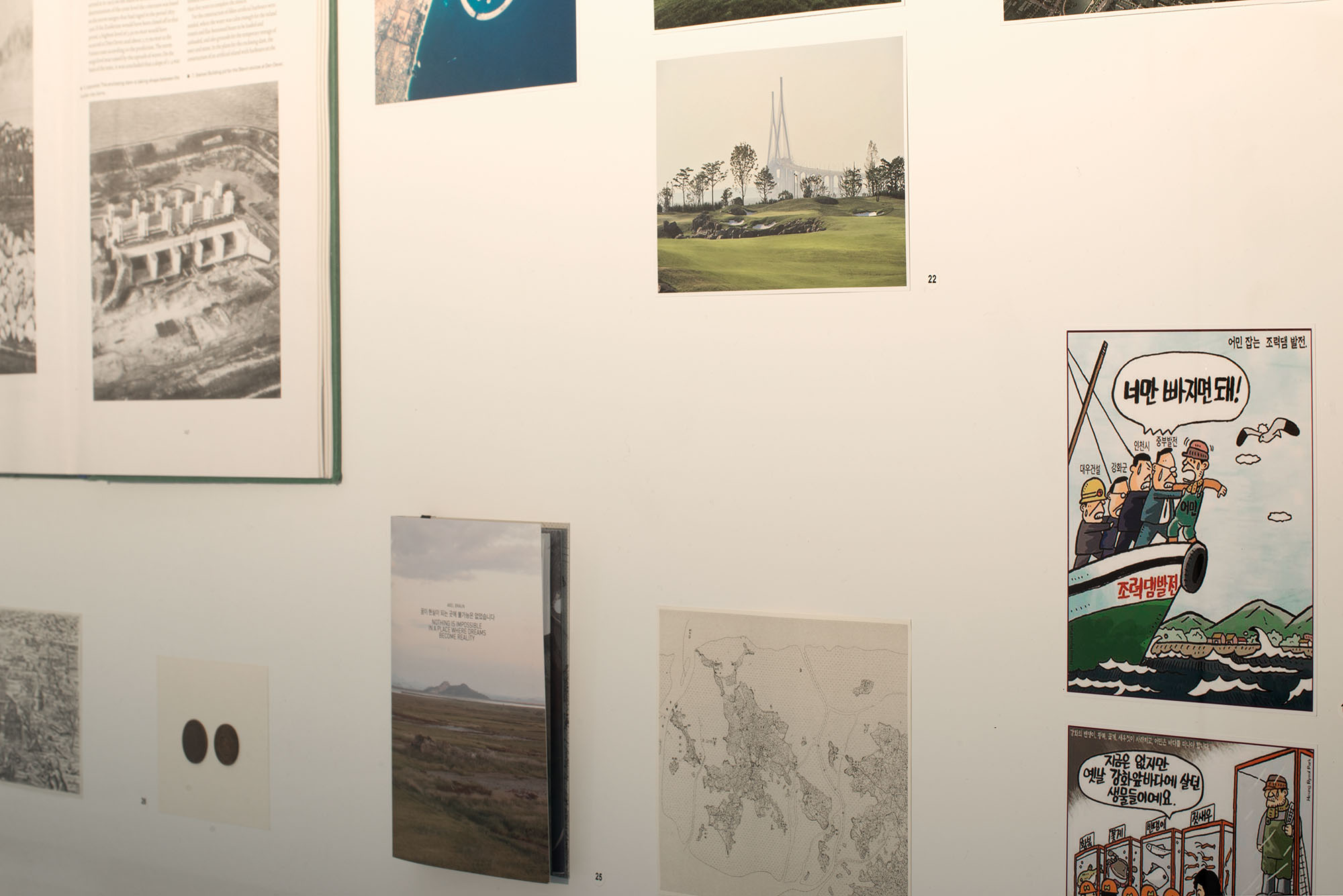The case study for DISTURBED HARMONIES [ANTHROPOCENE LANDSCAPES] visits several land reclamation projects in South Korea. For example, the site of an ecological disaster was transformed into the world’s largest tidal power plant. Nearby, a smart city has been built on a former bird sanctuary – while being promoted as particularly sustainable.
Axel Braun, Daewoo E&C, SiHwa Tidal Power Plant, found footage (edit), 00:00:50, 2012
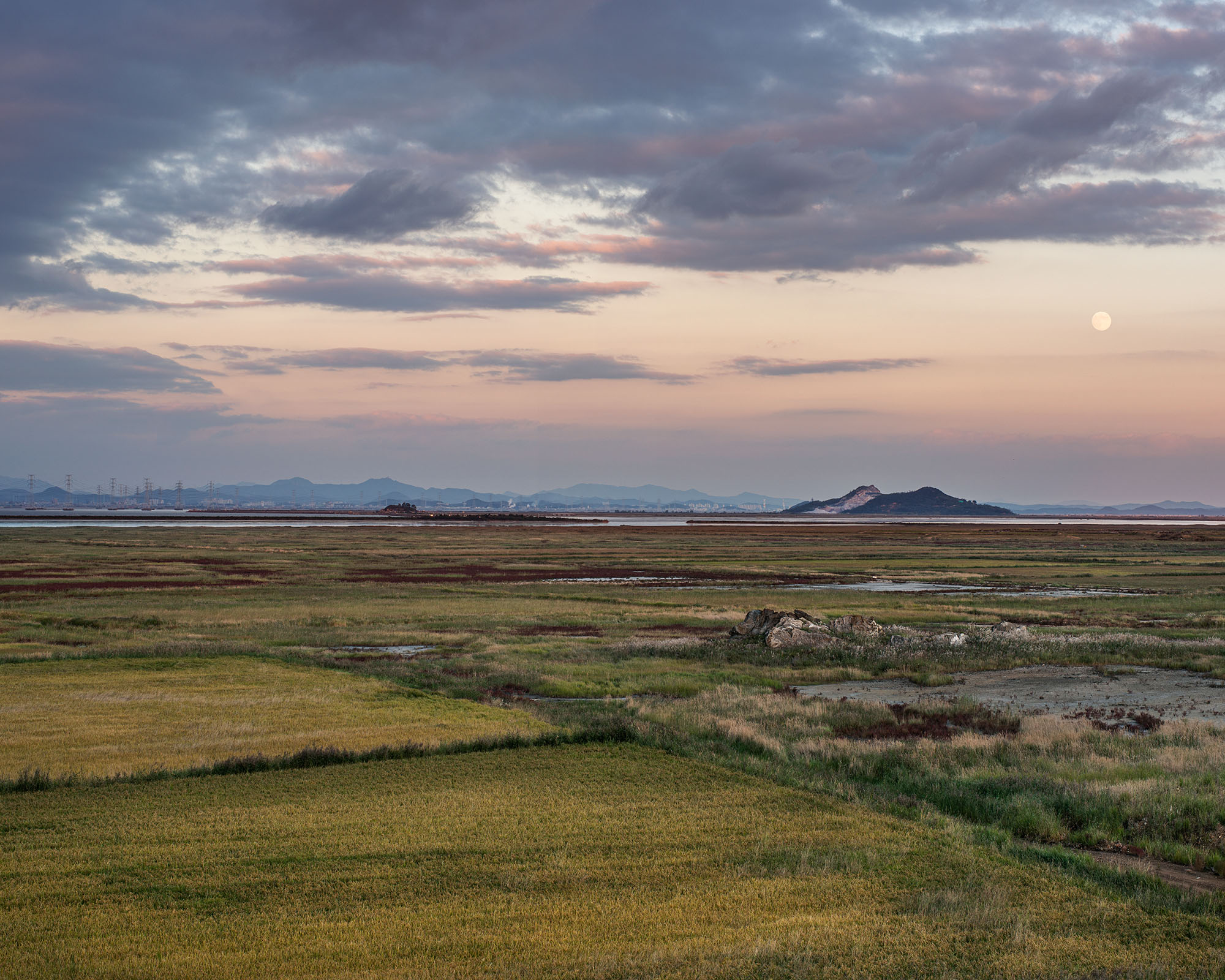
Since the ecological disaster that resulted from damming the bay, the land reclamation plots have been turned into artificial marshlands. The island on the right had been split by a quarry and was turned into rubble used as filling material for other land reclamation sites.
On the South Korean peninsula, further expansion of urban areas is restricted by geological conditions. Large-scale land-reclamation activities along the Western coast are the consequence, especially in the agglomeration around Seoul. Many former islands and bays have become part of the mainland in recent decades. For example, the island Daebudo in Gyeonggi Bay was connected to the mainland by a twelve-kilometre-long dam in 1994.
The aim was to turn the dammed saltwater bay into a freshwater reservoir and to facilitate land reclamation along the shores, a scheme comparable to the Ijsselmeer in The Netherlands. Because of insufficient purification facilities in a densely populated region, the endeavour soon became an ecologic disaster. Opening the dam to wash the polluted Si-Hwa Lake out by the tides appeared as the only solution. Eventually, the dam and the bay became the world’s largest tidal power plant in an effort to lead the infrastructure back to profit and reputation.
On the other side of the bay, the planned city of New Songdo was established on a land reclamation site that allegedly replaced a bird sanctuary. Nevertheless, architects and investors advertised the future free-trade zone as a role model for sustainable urban planning. Because of smart technologies, New Songdo City was announced to have 30 per cent less carbon dioxide emissions than a conventional city of its size.
In 2012, the construction works were delayed and those parts that were already completed resembled a ghost town. The global financial crisis had left clear marks on a site promoted as the future business hub for Northeast Asia. One of the few assets already in operation was the Jack Nicklaus Golf Club course suitable for international tournaments. New Songdo was well prepared for the return of the anticipated growth: numerous plots for further constructions were available, idly awaiting their future purposes in a rectangular grid of unfinished streets.
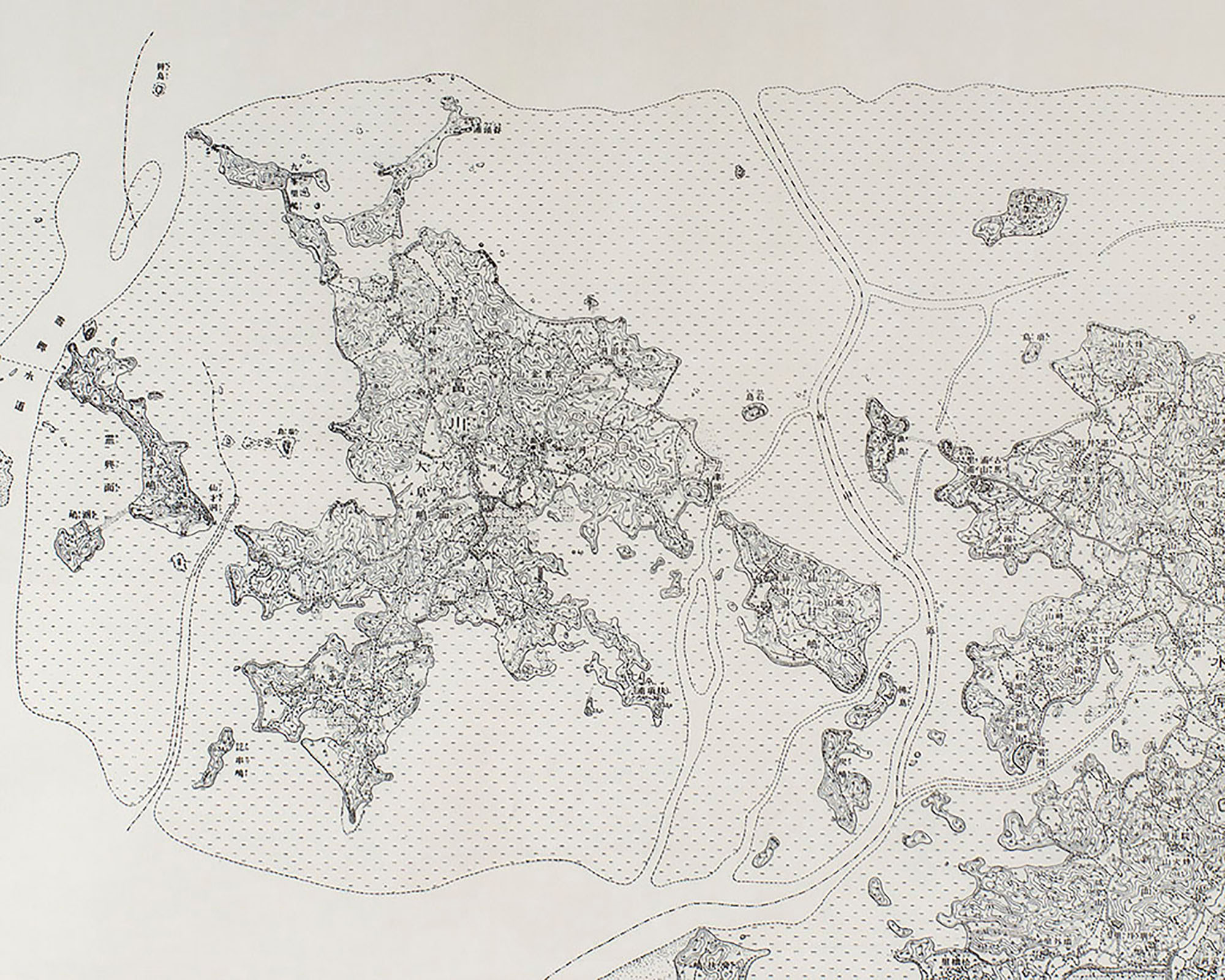
Axel Braun, Growing Green, FullHD video, 00:18:33, 2012
Areal view of Daebudo, due to land reclamation, the island has been almost fully connected to the mainland.
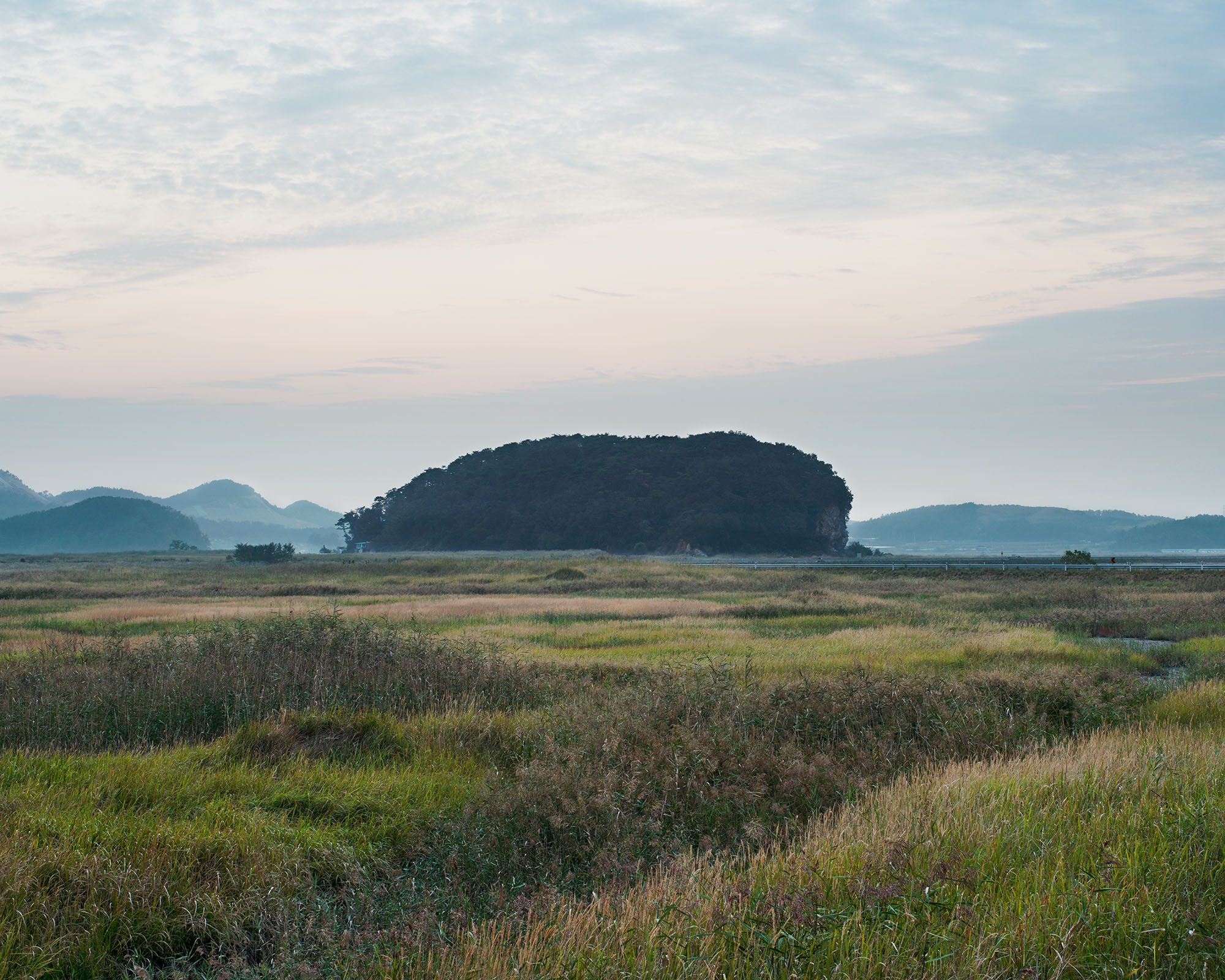
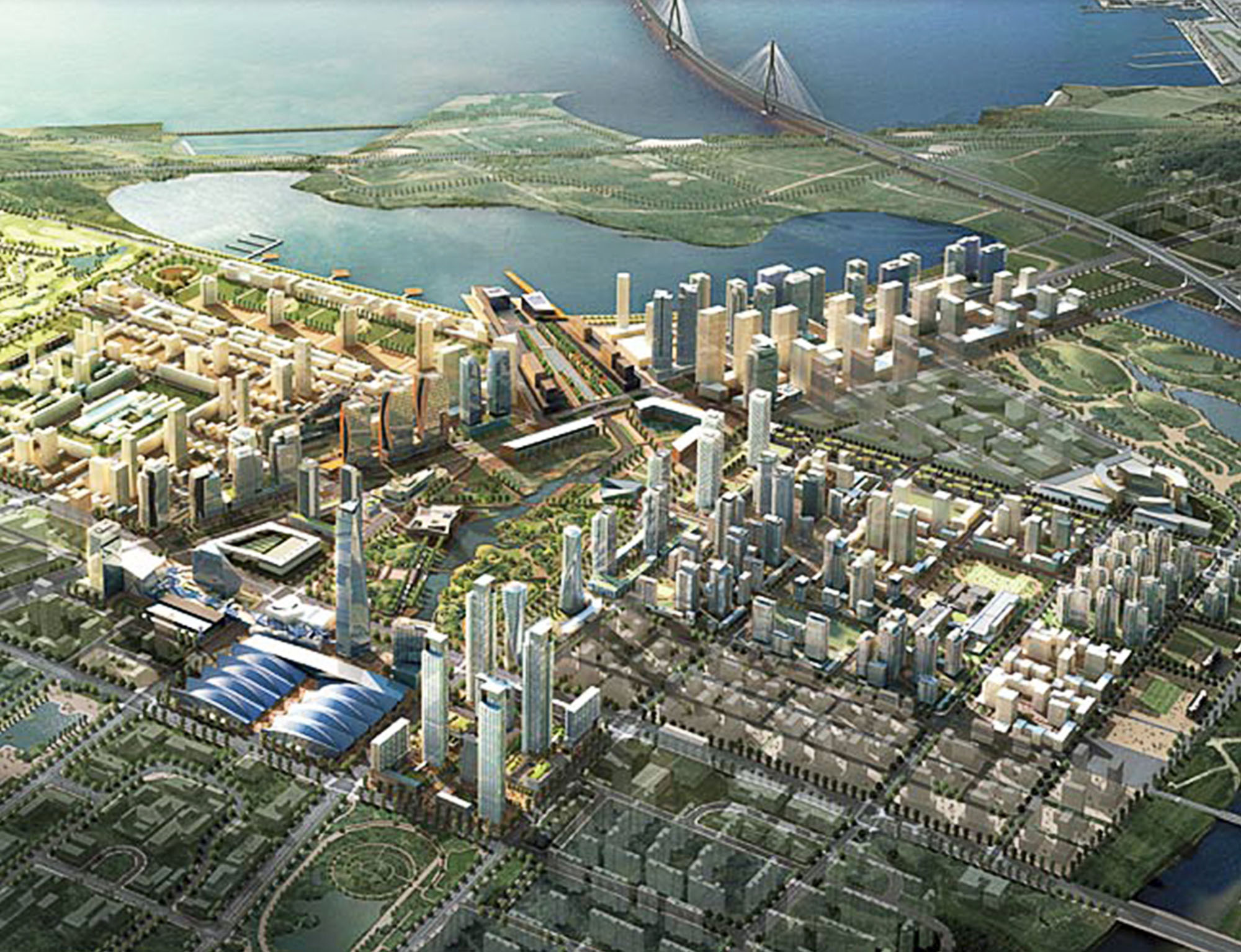


NOTHING IS IMPOSSIBLE IN A PLACE WHERE DREAMS BECOME REALITY
in the framework of 123 Project by Gyeonggi Creation Center,
exhibition in abandoned houses in a fishing village,
table, cut-plot out of adhesive foil, photo prints pinned to the walls,
Daebudo, South Korea; 2012, November 3–30

Van Bommel Van Dam Prijs 2013 (group show)
Museum Van Bommel Van Dam, Venlo
2013, June 9 – September 1
Van Bommel Van Dam Prijs 2013 (group show)
Museum Van Bommel Van Dam, Venlo
2013, June 9 – September 1
The case study was realised during an artist-in-residence programme at Gyeonggi Creation Center on Daebudo, South Korea, in 2012. Gyeonggi Cultural Foundation supported the project.
